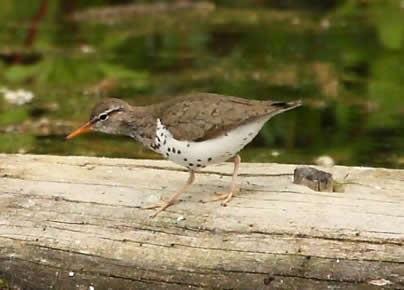

STUDYING BIODIVERSITY

by
Brian Klinkenberg
Department of Geography, University of British Columbia
Introduction
Biodiversity in its broadest sense refers to all of the organisms on the planet earth, their homes or habitats, and the systems that support them. Our understanding of biodiversity depends first upon our ability to know what we have. How many species are there on Earth? Where are they found? Where are the hot spots of species concentrations? Where are new species being found? As we know from newspaper accounts, new species are still being discovered, tucked into hidden valleys and remote regions of the world, or uncovered by genetic, or DNA, analysis. These include new species of mammals, birds, amphibians and many many invertebrates. This is occurring while, at the same time, known species are being lost.
Many species, such as tigers, teeter on the brink of extinction in the wild. The species of our planet are up against an army of threats that disturb or remove their homes. They face the impacts of warfare, urban expansion, oil and gas extraction, diamond, ore and nickel mining, and the very simple need for food. "Bush meat" takes a large toll on wildlife populations, yet is at the very basic level of human survival. In the face of this, it is a race against time to document the true biodiversity of Earth so that we have a better understanding of what needs protection. Undoubtedly, species are being lost before we ever know of their existence.
But protecting biodiversity depends on more than just knowing what we have, or putting in place protection mechanisms.. We also have to gain understanding of how species live, what they need to live, how they can persist in the face of human expansion, and how we can better co-exist in order to retain their ecosystems--the very ecosystems we are ourselves dependent upon. All of this is essential for long-term protection of populations and their habitats. Simply creating an ecological reserve for a species doesn't in the long-run protect it if the ecological matrix that supports it is in trouble. We need to know what that matrix is, what it needs to persist and be healthy, and how much of it is necessary to maintain species populations.
There are many ways to achieve this understanding, and researchers on all continents are working towards this in various ways.
Who studies biodiversity?
Biodiversity and biodiversity conservation is studied by scientists in several fields. These include ecologists, zoologists, botanists, biogeographers, and geneticists, with each exploring the subject from different perspectives and with different hypotheses. They explore how ecosystems function, how plant assemblies are formed, what drives population dynamics, and the factors that lie behind species distributions in the landscape.
In conservation biology, the development and understanding of ecological reserves is a major focus. Conservation biologists study the connectivity of remnant ecosystems, the factors influencing plant and animal movement, and the role of invasive species in ecosystem balance. Conservation geneticists study the genetic makeup and strength of populations, and explore the boundaries of species. Population ecologists explore the dynamics of predator-prey relationships, the role of dormancy in plant population survival, and the effects of disturbance on ecosystems and populations. Importantly, biodiversity researchers explore the factors behind species extinctions, and what is needed to stem the tide of species loss on Earth.
What tools are being used to study biodiversity
In all of these cases, biodiversity researchers work with a variety of tools in order to gain insight into their subject, to tease out key information on biodiversity, species, populations and ecosystems. With the advent of new technologies in the areas of genetic research, spatial research and remote sensing, the abilities of researchers to gain insights into biodiversity has expanded. New depths are being explored, and many new discoveries are being made daily.
The tools they use to carry out their research vary, and include:
Please cite these pages as:
Author, Date. Page title. In Klinkenberg, Brian. (Editor) 2017. Biodiversity of British Columbia [www.biodiversity.bc.ca]. Lab for Advanced Spatial Analysis, Department of Geography, University of British Columbia, Vancouver.
All material found on this web site is covered by Canadian Copyright Laws. Please contact the respective copyright holder if you wish to use any illustration, photograph or text.